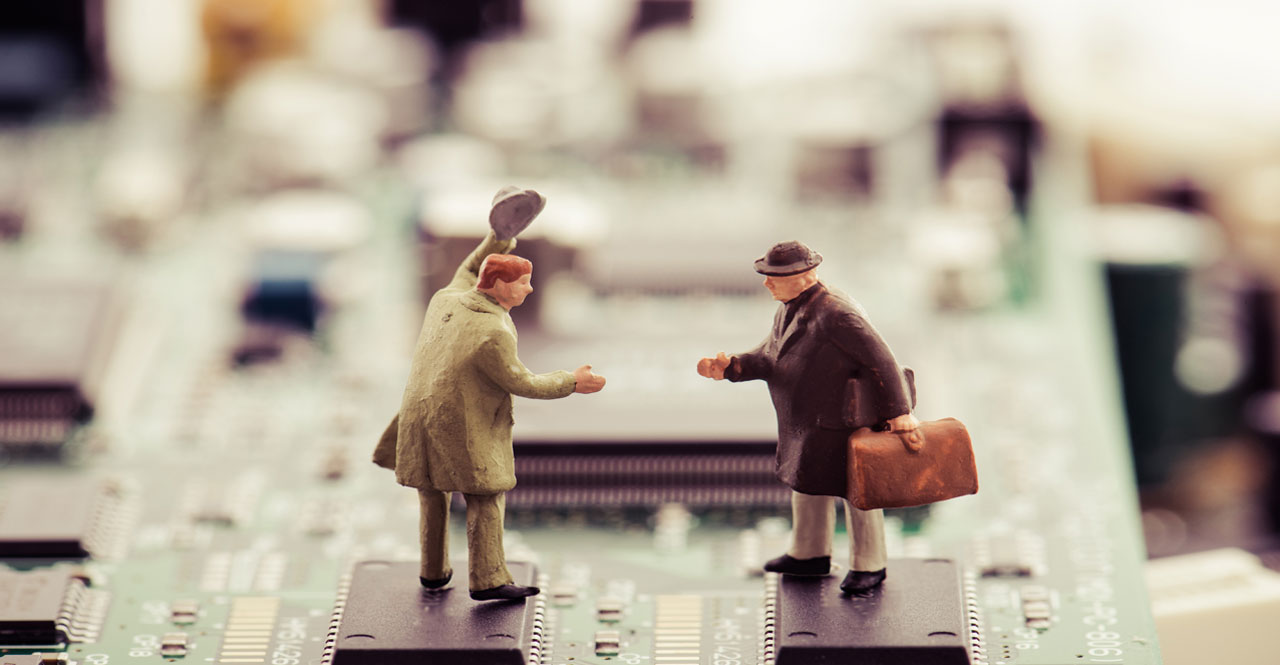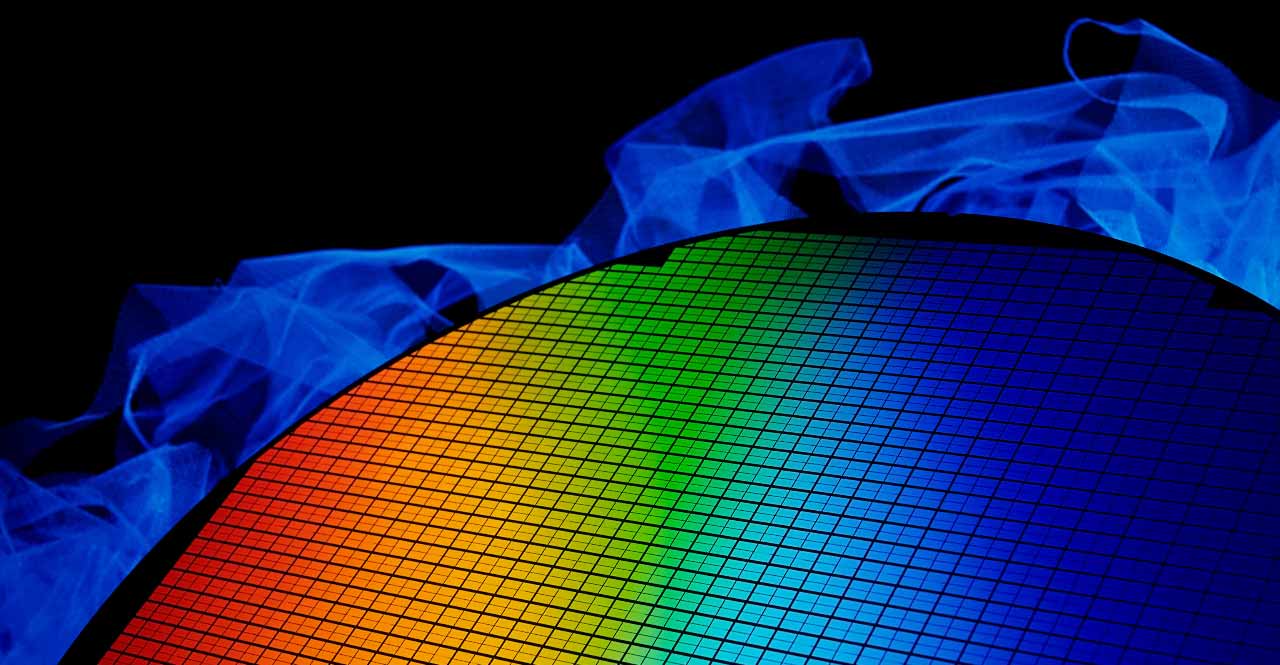Published: February 10, 2023
Updated: April 23, 2025
In Volume 2 and Volume 3, I talked about technical aspects of semiconductor miniaturization. In this volume, I would like to focus on its business aspects.
Table of Contents
Products Driving the Launch of Semiconductor Industry
Development of Calculators and High Integration of Semiconductors
Volume 4: Semiconductor Miniaturization and Semiconductor Business
- What Products Drove the Development of Semiconductor Industry: Transistor Radios and Calculators -
Products Driving the Launch of Semiconductor Industry
Let's look at the kind of products that drove the launch of semiconductor industry.
Before integrated circuits, the first product using transistors was a hearing aid, which seems to have made a significant contribution to the improvement of performance by achieving small size and low power consumption. Later, as I mentioned in the first volume, Tokyo Tsushin Kogyo (now Sony) succeeded in commercial production of a battery-powered portable transistor radio in 1955. They developed and produced transistors in-house. In fact, at the end of 1954, the year before Tokyo Tsushin Kogyo launched its transistor radio, a transistor radio was launched in the United States, but it failed commercially. Tokyo Tsushin Kogyo's transistor radio was the first commercially successful transistor radio in the world. Since then, semiconductors have been used in various consumer products such as televisions.

Since the invention of integrated circuits in the late 1950s, the first commercially successful product was a calculator (electronic desktop calculator). Calculators made in Japan dominated the world market and contributed greatly to the development of semiconductor industry not only in Japan but also in the world.
As my college days were before the spread of personal computers, the latest digital device available to science students was a scientific calculator. The picture on the right is a scientific programmable calculator which I bought at a university co-op store in the late 1970s when I was a senior in college. I don't use it now, but it still works fine. The picture shows the calculation of 210 = 1024. Scientific calculators do not seem to sell very well in Japan today, but they still sell tens of millions of units per year in the global education market.
Development of Calculators and High Integration of Semiconductors
The history of calculator development was the first and a typical example of revolutionary effects achieved by high integration of semiconductors: Adoption of new semiconductor devices and high integration enabled equipment to achieve miniaturization, reduction in price, and low power consumption, which resulted in the expansion of business from stationary business use to portable personal use, and an explosion in demand for semiconductors. Since the main applications of semiconductors in the U.S. seemed to be military and aerospace, calculators were also a trigger for the expansion of semiconductor applications in the consumer market.
Let's review the history of calculator development. While the world's first calculator using vacuum tubes was made by a British company in 1962, the world's first all-transistor calculator using Ge transistors was made in Japan and sold in 1964 for about 500,000 yen, which was the year of the Tokyo Olympics. After that, calculators using novel semiconductor devices were launched in Japan almost every year: In 1965, silicon transistors were adopted; As early as 1966, adopted integrated circuits (ICs); In 1967, the evolution from bipolar transistor ICs to MOS transistor ICs progressed; In 1969, large-scale integrated circuits (LSIs) were adopted. Unfortunately (from a Japanese engineer's point of view), the first LSI calculator used an LSI made in the U.S., but the first calculator using LSIs made in Japan was introduced in 1970 and a single-chip LSI calculator was finally released in 1971. It took only 7 years from Ge transistors to a single-chip LSI. In terms of the number of semiconductor elements, while the first transistor calculator had a little less than 3,000 diodes and transistors included, it had a single chip or one component by 1971. A calculator that cost 500,000 yen in 1964 decreased in price to around 10,000 yen in the early 1970s thanks to the use of LSIs and exploded in sales as it became from an office device to a personal device.
Note: IC and LSI: Abbreviation for “Integrated Circuit” and “Large Scale Integration” respectively. Some say that LSI is a term for the integration of more than about 1,000 elements, but the definition is not clear. I would like to discuss bipolar transistors and MOS transistors in a separate blog.
At that time, each calculator manufacturer seemed to use its own LSI. Since TI built a factory in Japan and launched a single-chip LSI for calculators into the market for external sales in 1971, any manufacturer was able to make calculators by simply assembling components without designing a system. At a certain time, dozens of companies in Japan entered the calculator market and it was called “calculator war.”
Note: TI stands for Texas Instruments, a well-known US-based semiconductor company.
According to my cursory research on the web, in terms of process miniaturization level, integrated circuits used in calculators in 1967 adopted a minimum dimension of 15 µm and a few tens of elements in a chip. TI's one-chip LSI in 1971, mentioned above, had about 5,000 transistors and a minimum dimension of 10µm. Miniaturization progressed and the level of integration increased dramatically. Comparing the miniaturization level to the present, the minimum processing dimension of the cutting-edge process using the most advanced EUV lithography equipment as of 2025 is about 10 nm, which means that the process has been miniaturized to about one-thousandth the size of the process used at that time.
Note: The advanced process as of 2025 is called 3 nm or 2 nm, but as discussed in Volume 3, the name of the process does not match the actual dimensions of the advanced process, and the actual minimum dimensions are not 3 nm or 2 nm, but about 10 nm.
The original paper of Moore's Law, which I mentioned in the first volume, was published in 1965. In this paper, Moore made a prediction for the semiconductor industry next ten years from then. The story of calculators I described thus far is exactly what happened in the first half of the prediction period.
Table. Chronology of the Development of Calculators and Semiconductor Devices.
| Year | Event | The number of elements | Miniaturization | Price | Other events |
| 1962 | World's first calculator (vacuum tube) | - | - | - | - |
| 1963 | - | ||||
| 1964 | World's first all-transistor calculator (Ge transistor) | A little less than 3,000 | About 500,000 |
Tokyo Olympics | |
| 1965 | Adoption of silicon transistor | From more than 1,000 to 100 level | 500,000 to 100,000 |
Moore's law original paper | |
| 1966 | Adoption of bipolar integrated circuits (ICs) | - | |||
| 1967 | Adoption of MOS integrated circuits (ICs) | 15 µm | |||
| 1968 | - | - | |||
| 1969 | Adoption of large-scale integrated circuits (LSI) | Less than 10 | Less than 100,000 | ||
| 1970 | Adoption of LSI made in Japan | ||||
| 1971 | Emergence of microprocessors for calculators | 10 µm | |||
| Emergence of calculators with a single-chip LSI | 1 | - | |||
| TI launched a single-chip LSI for external sales. | |||||
| 197x | Calculator War | - | 10,000 level and then, less than 10,000 |
Calculators truly drove the development of semiconductor industry, which was just starting up, and can be regarded as the product that established the foundation for the semiconductor business thereafter. As is well known, the first microprocessor was also developed as integrated circuits for calculators. I think it is not an overstatement to say that calculators built not only the foundation of digital devices that followed calculators, such as PCs and smartphones, but also that of semiconductor business which support these devices. Computers became personal devices (PCs) by becoming smaller and less expensive, and telephones became portable and personal devices (smartphones) in a similar way to calculators. However, with the capabilities of integrated circuits at the time, I think that making calculators were probably the limit. Subsequent progress in high integration through miniaturization led to the realization of PCs and smartphones.
In this volume, I have described the start-up period of semiconductor industry (until early 1970s). Both transistor radios and calculators highlighted here are products in which Japanese companies and Japanese people played a major role. In both cases, the use of semiconductors led to miniaturization, price reduction, and low power consumption, resulting in personal devices that can be carried by individuals, and an explosion in their numbers. In the next volume, I will move forward in time to the present and talk about business-related aspects of a cutting-edge process.
On April 23, 2025, the following updates were made in the section “Development of Calculators and High Integration of Semiconductors”:
1. Added a note about the TI company after the third paragraph beginning with “At that time, each calculator manufacturer…”
2. Revised the fourth paragraph beginning with “According to my cursory research…” and added a note for additional information after the paragraph.
3. Made minor revisions (e.g. consistent terminology) to the paragraph beginning with “Calculators truly drove the development…” below the chronology table.
Click below to read this series.
Semiconductor Miniaturization:
Volume 1: Semiconductor Miniaturization: What is Moore’s Law?
Volume 2: Semiconductor Miniaturization and Manufacturing Process
Volume 3: Semiconductor Miniaturization and International Technology Roadmap
Volume 4: Semiconductor Miniaturization and Semiconductor Business
Volume 5: Semiconductor Miniaturization and Semiconductor Business (Part 2)
Volume 6: Semiconductor Miniaturization and Semiconductor Devices
Volume 7: Semiconductor Miniaturization: What is MOSFET Scaling?
Volume 8: Semiconductor Miniaturization: Limitations of MOSFET Scaling
Volume 9: Semiconductor Miniaturization and Analog Circuits
Shift to Larger Diameter Silicon Wafers:
Volume 10: Shift to Larger Diameter Silicon Wafers: How a Common Material, Silicon, Became a Main Player
Volume 11: Shift to Larger Diameter Silicon Wafers (Part 2): How Silicon Wafers Are Made






Comment